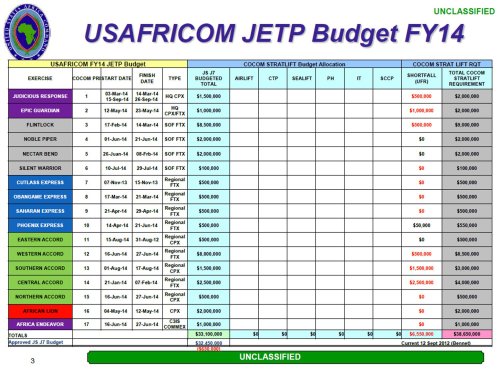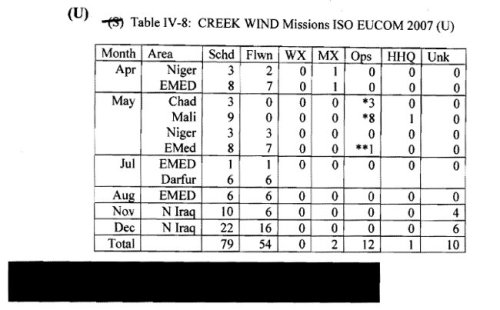America’s Codebook: Africa now has a table for military training exercises in Africa to compliment its lists of military operations past and present. I’ve also written summaries for the ones identified in official documentation as special operations forces field training exercises (“SOF FTX”). I had been aware of two of these, Exercises Flintlock and Silent Warrior, both of which are largely focused on the Trans-Sahara / Sahel region. I had not been aware of the other two, Exercises Nectar Bend and Noble Piper. While Flintlock and Silent Warrior both focus on missions generally performed by special operations forces, it appears that the SOF FTX designation is applied even when the exercise is simply run by US special operations forces.

Malian soldiers conduct fast rope operations out of a MH-47 Chinook helicopter from the US Army’s 160th Aviation Regiment (Special Operations) (Airborne) in Bamako, Mali on 18 May 2010 as part of Flintlock 2010.
Exercise Flintlock is relatively well known, though generally more recently. It was hosted in Mali in 2010 and was scheduled to be hosted in Mali again in 2012 before the coup in that country led to its cancellation. This years exercise was hosted in Mauritania with an eye still toward Mali, especially as many of the participants were already contributed to international efforts there or were preparing to. Silent Warrior, a Joint Chiefs of Staff exercise focusing on the region, also popped up into the news this year.

US Africa Command (AFRICOM) Joint Exercise Training Program (JETP) Budget FY13, as of 18 Sept 2012 (Click for larger image)
This is very little information, however, on Nectar Bend and Noble Eagle, held regularly in Ethiopia and Kenya respectively. These exercises, which date back at least to the 1990s, are led by US special operations forces in support of the African Contingency Operations Training and Assistance (ACOTA) program. ACOTA, which is managed by the US Department of State and supported by the US Department of Defense, provides training for African forces to support their deployment on peacekeeping and other contingency operations. ACOTA started in 1997 as the African Crisis Response Initiative (ACRI), before switching names in 2004. Nectar Bend, at least, predates ACRI however. It is possible that Noble Piper does as well.

US Africa Command (AFRICOM) Joint Exercise Training Program (JETP) Budget FY14, as of 18 Sept 2012 (Click for larger image)
As of 2012, there was no Nectar Bend exercise planned for 2013, though there was one planned for 2014. It is possible that the exercise is biennial, unlike the annual Noble Piper exercise. According to the same briefing documents, only $150,000 for Strategic Lift (STRATLIFT) for Noble Piper 2013. STRATLIFT is the air, sea, and ground costs associated with deploying units and equipment into and out of theater. However, $2,000,000 was budgeted for both Nectar Bend 2014 and Noble Piper 2014. No explanation is provided in the document for this change.
